Biography of George Raper. The
First Fleet Sails. At daybreak on Sunday 13 May 1787, the Sirius and the other ships of the
First Fleet weighed anchor and
... www.nla.gov.au/exhibitions/georgeraper/biography/biography2.html - 21k - Cached - Similar pages
 *
*
http://gutenberg.net.au/ebooks03/0301141h.htm
- 2 women were chained together for a month for "using language un-befitting ladies"
- For stealing, another woman was chained to a dog for 2 months.
- A common punishment was to shave a prisoners head and clamp a spiked iron collar around her neck.
Riotous scenes as women are landed http://www.convictcreations.com/history/description.htm Port Jackson, Feb 6. Scenes of riot and debauchery after the disembarkation of the women convicts tonight transformed Sydney cove into something resembling a gin palace attached to a brothel.* All this took place at night during a violent storm with lightening bolts which, at one place, split a tree in half, killing five sheep and a pig that were penned below it. The licentious merriment began when some merchant seamen requested some grog from their captain. No doubt the man had good reason to comply, in the relief at getting rid of the last of his convicts, as he had faced a penalty of £40 for every convict missing. Soon the sailors and convicts were in and around the women's tents, some queuing for sex, others making love with women they had forged attachments on the voyage. Others were swearing, fighting or singing. While the scene was deplorable no action by the Governor nor his officers. Presumably they thought that intervention would have provoked a serious riot, and that it was best to wait for the morning to re-establish order. The women, cooped up on the voyage and for another 10 hot and intolerable days outside Sydney Cove, had not too many chaste figures among them. Reports on trading convict women*
London, Sept 28, 1798.Disturbing reports have been arriving of the degrading treatment of female convicts sent to New South Wales. There have been descriptions of dreadful scenes upon convict vessels arriving in port. The decks have been crowded with both settlers and male convicts alike, picking and choosing the women them as though they are no more sheep or cattle. Some settlers want women for servants or wives, while the convicts are looking for wives. Some women not chosen on the spot are then taken in open boats up the river to the settlement of Parramatta, where another selection process takes place. Those not chosen for particular purposes are then given the free will to go with whom ever they prefer. Those who do not go with one man are assigned to take care of huts in which there are from two to ten men.
A gallows lament by young convict
Sydney cove, June 24. Samuel Payton, a 20-year-old convict, who will die on the gallows tomorrow for attempted robbery, has sent a most moving letter to his mother. "My dear mother! With what agony of soul do I dedicate the last few moments of my life, to bid you an eternal adieu! My doom being irrevocably fixed, and ere this hour tomorrow I shall have quitted this vale of wretchedness. I have at last fallen an unhappy, though just, victim of my follies. Banish from your memory all my former indiscretions and let the cheering hope of a happy meeting hereafter console you"
A woman convict is hanged for robbery
Sydney Cove, Nov 23 Ann Davis has been hanged, the first women in the colony to be "turned off" by the executioner. She was found guilty of stealing clothing and goods from the house of convict Robert Sidaway, who co-habituated there with Mary Marshal. Davis was in the habit of calling by and smoking a pipe with them. When they were away on November 14 she gained access through a window. After upsetting a tub of water in the house, she made off with her booty. It was later found in her possession.
Convict woman writes of life in 'this solitary waste of creation'
Norfolk Island, Nov 19 The plight of convict women has been describe in a letter which has been privately sent in a ship today. A convict women writes of "our disconsolate situation in this solitary waste of creation" " The inconveniencies.. suffered for want of shelter, bedding etc are not to be imagined by any stranger. However, we have now two streets in four rows of the most miserable huts you can possibly conceive of deserve that name" The women are "deprived of tea and other things.... and as they are all totally unprovided with cloths, those who have young children are quite wretched. "Several women, who became pregnant on the voyage, and are since left by their partners, who have returned to England , are not likely to form any fresh connections. "We are comforted with the hopes of a supply of tea from China , and flattered with getting riches when our settlement is complete. "Our Kangaroo rats are like mutton, but much leaner; and there is a kind of chickweed so much in taste like our spinach. Something like ground ivy is used for tea; but a scarcity of salt and sugar makes our best meals insipid. "The separation of several of us to an uninhabited island was like a second transportation. In short, every one is so taken up with their own misfortunes that they have no pity to bestow on others"
Deaths and Mutiny on convict vessels provoke a scandal
Sydney, August 9. Despite the past disgraces of convict ships, and the regulations and warnings designed to improve their condition, two more vessels have arrived at Sydney in deplorable state, and with awful death rates. The Hercules arrived on June 26 with the news that 30 convicts had died on the voyage and another 11 had been killed during a mutiny, with two dying later of their wounds and a third being summary executed by the captain. The Atlas arrived on July 6, having lost 68 people through scurvy and dysentery. Governor King described the ships as being "filthy beyond description. Some convicts were lying dead with heavy irons on, while many more died as they were coming to the hospital" There has been an inquiry as to whether the masters had contravened their charters as convict carriers. The Governor noted that the Atlas was carrying liquor.
*********************************************************************************
- " Bush Spirits " and"The Needles" waterhole.... by Ric. (Press them to enlarge.)
- *




Cheryl Craig Aboriginal Artist. "Goanna Dreaming"
http://steven-cousley.com/cheryl/  Figure by RIC. "Why are you just sitting there Jackie? Why don't you do some bloody work you lazy boong?" asked the station manager.
Figure by RIC. "Why are you just sitting there Jackie? Why don't you do some bloody work you lazy boong?" asked the station manager.  "I bin wait for all you bloody white fella go back England!"
"I bin wait for all you bloody white fella go back England!" 

Aboriginal Art and Culture,
Aboriginal Art Online,
Arnhem Land Rock Paintings,
Australian Rock Art Research Association,
Bradshaw Foundation,
Dating Arnhem Land Rock Art,
International Rock Art Research Team,
Kakadu National Park,
Michael Barry's Rock Art Page, and
Rock 






Aboriginal rock art...Kangaroos, Black Swan , Native Seated by, Ric





The native art is by various artists. The watercolours were painted by Albert Namatjira,(family pictured above) an almost illiterate fullblood native of Central Australia. He lived in a dry riverbed at Alice Springs and, when young, begged for the price of a loaf of bread or a beer. His paintings show that aboriginals are intelligent and talented, but for 200 years they were hunted, killed, starved and jailed just for being themselves. Namatjira was born into the Arrernte community at the Hermannsburg Lutheran Mission, near Alice Springs, Northern Territory. He was first named Elea but then christened as Albert when his parents adopted Christianity. At 13 years of age Namatjira was initiated into the Arrernte community and taught the traditional laws and customs. At 17 he married Ilkalita (Rubina) of the Luritja community. Namatjira met Australian artist Rex Battarbee who visited Hermannsburg in 1934. Battarbee tutored Namatjira in the western tradition of painting and helped him to organise his first exhibition in Melbourne in 1936. This exhibition was a success and Namatjira was encouraged to exhibit his work in Adelaide and Sydney. Other exhibitions of his work followed, especially during the 1950s. Namatjira was granted full citizenship rights in 1957. Unlike many other Aboriginal people of the Northern Territory, Namatjira was then entitled to vote, to live where he wished and to purchase alcohol. In 1958 the Alice Springs Police charged Namatjira with supplying alcohol to Aboriginal people. He denied the charge and fought the sentence he received in both the Supreme Court and the High Court. His appeals were unsuccessful and he was sentenced to two months in prison. Albert Namatjira died in 1959.


National Library of Australia The first records of European mariners sailing into 'Australian' waters occurs around 1606, and includes their observations of the land known as
Terra Australis Incognita (unknown southern land). The first ship and crew to chart the Australian coast and meet with Aboriginal people was the
Duyfken captained by Dutchman, Willem Janszoon.
Between 1606 and 1770, an estimated 54
European ships from a range of nations made contact. Many of these were merchant ships from the Dutch East Indies Company and included the ships of
Abel Tasman. Tasman charted parts of the north, west and south coasts of Australia which was then known as
New Holland.
In 1770, Englishman Lieutenant James Cook charted the Australian east coast in his ship
HM Bark Endeavour. Cook claimed the east coast
under instruction from King George III of England on 22 August 1770 at Possession Island, naming eastern Australia 'New South Wales'. The coast of Australia, featuring Tasmania as a separate island, was mapped in detail by the English mariners and
navigators Bass and Flinders, and the French mariner, Baudin. A nearly completed
map of the coastline was published by Flinders in 1814.
This period of European exploration is reflected in the names of landmarks such as the Torres Strait, Arnhem Land, Dampier Sound, Tasmania, the Furneaux Islands, Cape Frecinyet and La Perouse. French expeditions between 1790 and the 1830s, led by D'Entrecasteaux,
Baudin, and Furneaux, were recorded by the
naturalists Labillardière and
Péron.
The First Fleet and a British colony

John Allcot (1888-1973)
, The First Fleet in Sydney Cove, January 27, 1788, 1938, art reproduction. Image courtesy of the
National Library of AustraliaCaptain Arthur Phillip and the
First Fleet, comprising 11 ships and around 1,350 people, arrived at Botany Bay between 18 and 20 January 1788. However, this area was deemed to be unsuitable for settlement and they moved north to Port Jackson on 26 January 1788,
landing at Camp Cove, known as 'cadi' to the Cadigal people.
Governor Phillip carried
instructions to establish the first British Colony in Australia. The First Fleet was under prepared for the task, and the soil around Sydney Cove was poor. The young colony relied upon both the development of
farms around
Parramatta, 25 kilometres upstream to the west, and also trading food with local Aboriginal clans.
The
Second Fleet's arrival in 1790 provided badly needed food and supplies; however the newly arrived convicts were too ill, with many near to death, to be useful to the colony. The Second Fleet became known as the 'Death Fleet' - 278 of the convicts and crew died on the voyage to Australia, compared to only 48 on the First Fleet.
The colony experienced many other difficulties, including the fact that there were many more men than women - around four men for every woman - which caused problems in the settlement for many years.
Contacts and colonisation
In the winter of 1791, the process of British colonisation of Western Australia began when George Vancouver claimed the Albany region in the name of King George III. In the summer of 1801,
Matthew Flinders was welcomed by
Nyungar upon his arrival aboard the
Investigator and various items were exchanged. On the 1802 voyage from Sydney, Flinders recruited two Aboriginal people,
Bungaree, who had sailed with him on the
Norfolk, and Nanbaree. The visit of Flinders and other mariners to the coast of Arnhem Land is recorded in the paintings of 'praus' and European ships at rock art sites.
Initially, relations between the explorers and the Aboriginal inhabitants were generally hospitable and based on understanding the terms of trading for food, water, axes, cloth and artefacts, a relationship encouraged by Governor Phillip. These relations became hostile as Aborigines realised that the land and resources upon which they depended and the order oftheir life were seriously disrupted by the on-going presence of the colonisers. Between 1790 and 1810, clans people of the
Eora group in the Sydney area, led by
Pemulwuy of the Bidjigal clan, undertook a campaign of resistance against the English colonisers in a series of attacks.
Indigenous peoples
Many isolated Aboriginal communities in Australia are characterized by near unemployment, multi-generational welfare dependence, domestic and social violence, drug abuse, high crime rates and depression.
Recently Prime minister Rudd apologized to them for past government treatment. He did not apologize for present mistreatment.
 *
*

 Cheryl Craig Aboriginal Artist. "Goanna Dreaming" http://steven-cousley.com/cheryl/
Cheryl Craig Aboriginal Artist. "Goanna Dreaming" http://steven-cousley.com/cheryl/  Figure by RIC. "Why are you just sitting there Jackie? Why don't you do some bloody work you lazy boong?" asked the station manager.
Figure by RIC. "Why are you just sitting there Jackie? Why don't you do some bloody work you lazy boong?" asked the station manager.  "I bin wait for all you bloody white fella go back England!"
"I bin wait for all you bloody white fella go back England!" 






 Aboriginal rock art...Kangaroos, Black Swan , Native Seated by, Ric
Aboriginal rock art...Kangaroos, Black Swan , Native Seated by, Ric 



 The native art is by various artists. The watercolours were painted by Albert Namatjira,(family pictured above) an almost illiterate fullblood native of Central Australia. He lived in a dry riverbed at Alice Springs and, when young, begged for the price of a loaf of bread or a beer. His paintings show that aboriginals are intelligent and talented, but for 200 years they were hunted, killed, starved and jailed just for being themselves. Namatjira was born into the Arrernte community at the Hermannsburg Lutheran Mission, near Alice Springs, Northern Territory. He was first named Elea but then christened as Albert when his parents adopted Christianity. At 13 years of age Namatjira was initiated into the Arrernte community and taught the traditional laws and customs. At 17 he married Ilkalita (Rubina) of the Luritja community. Namatjira met Australian artist Rex Battarbee who visited Hermannsburg in 1934. Battarbee tutored Namatjira in the western tradition of painting and helped him to organise his first exhibition in Melbourne in 1936. This exhibition was a success and Namatjira was encouraged to exhibit his work in Adelaide and Sydney. Other exhibitions of his work followed, especially during the 1950s. Namatjira was granted full citizenship rights in 1957. Unlike many other Aboriginal people of the Northern Territory, Namatjira was then entitled to vote, to live where he wished and to purchase alcohol. In 1958 the Alice Springs Police charged Namatjira with supplying alcohol to Aboriginal people. He denied the charge and fought the sentence he received in both the Supreme Court and the High Court. His appeals were unsuccessful and he was sentenced to two months in prison. Albert Namatjira died in 1959.
The native art is by various artists. The watercolours were painted by Albert Namatjira,(family pictured above) an almost illiterate fullblood native of Central Australia. He lived in a dry riverbed at Alice Springs and, when young, begged for the price of a loaf of bread or a beer. His paintings show that aboriginals are intelligent and talented, but for 200 years they were hunted, killed, starved and jailed just for being themselves. Namatjira was born into the Arrernte community at the Hermannsburg Lutheran Mission, near Alice Springs, Northern Territory. He was first named Elea but then christened as Albert when his parents adopted Christianity. At 13 years of age Namatjira was initiated into the Arrernte community and taught the traditional laws and customs. At 17 he married Ilkalita (Rubina) of the Luritja community. Namatjira met Australian artist Rex Battarbee who visited Hermannsburg in 1934. Battarbee tutored Namatjira in the western tradition of painting and helped him to organise his first exhibition in Melbourne in 1936. This exhibition was a success and Namatjira was encouraged to exhibit his work in Adelaide and Sydney. Other exhibitions of his work followed, especially during the 1950s. Namatjira was granted full citizenship rights in 1957. Unlike many other Aboriginal people of the Northern Territory, Namatjira was then entitled to vote, to live where he wished and to purchase alcohol. In 1958 the Alice Springs Police charged Namatjira with supplying alcohol to Aboriginal people. He denied the charge and fought the sentence he received in both the Supreme Court and the High Court. His appeals were unsuccessful and he was sentenced to two months in prison. Albert Namatjira died in 1959. 






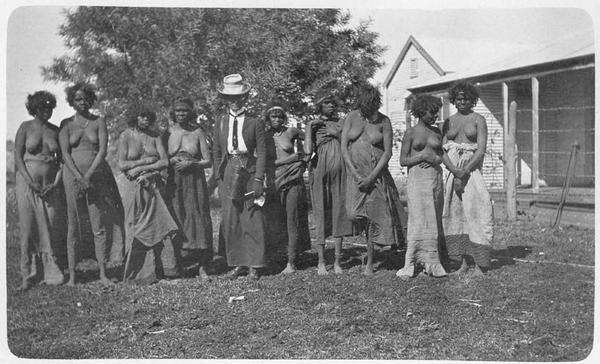



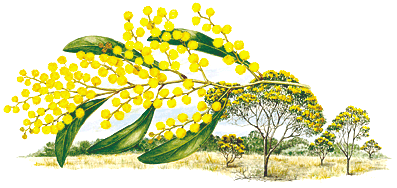


+copy.jpg)










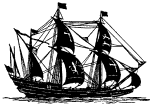





















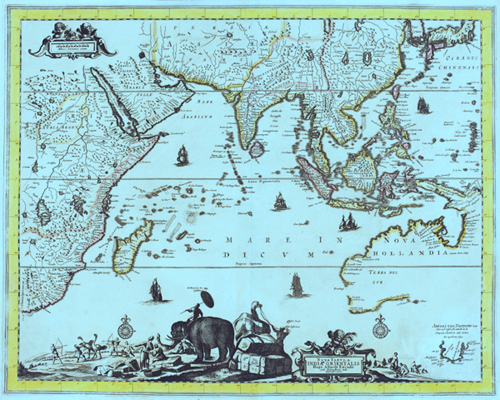

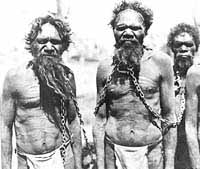
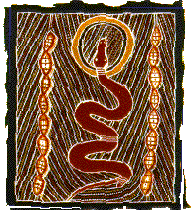


















.jpg)


























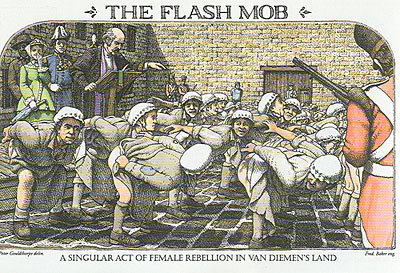
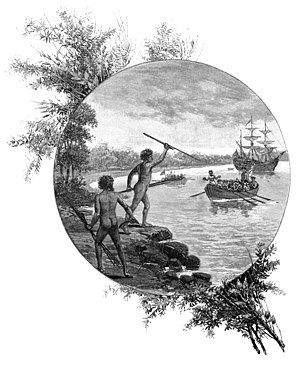 G
G







.jpg)
















No comments:
Post a Comment